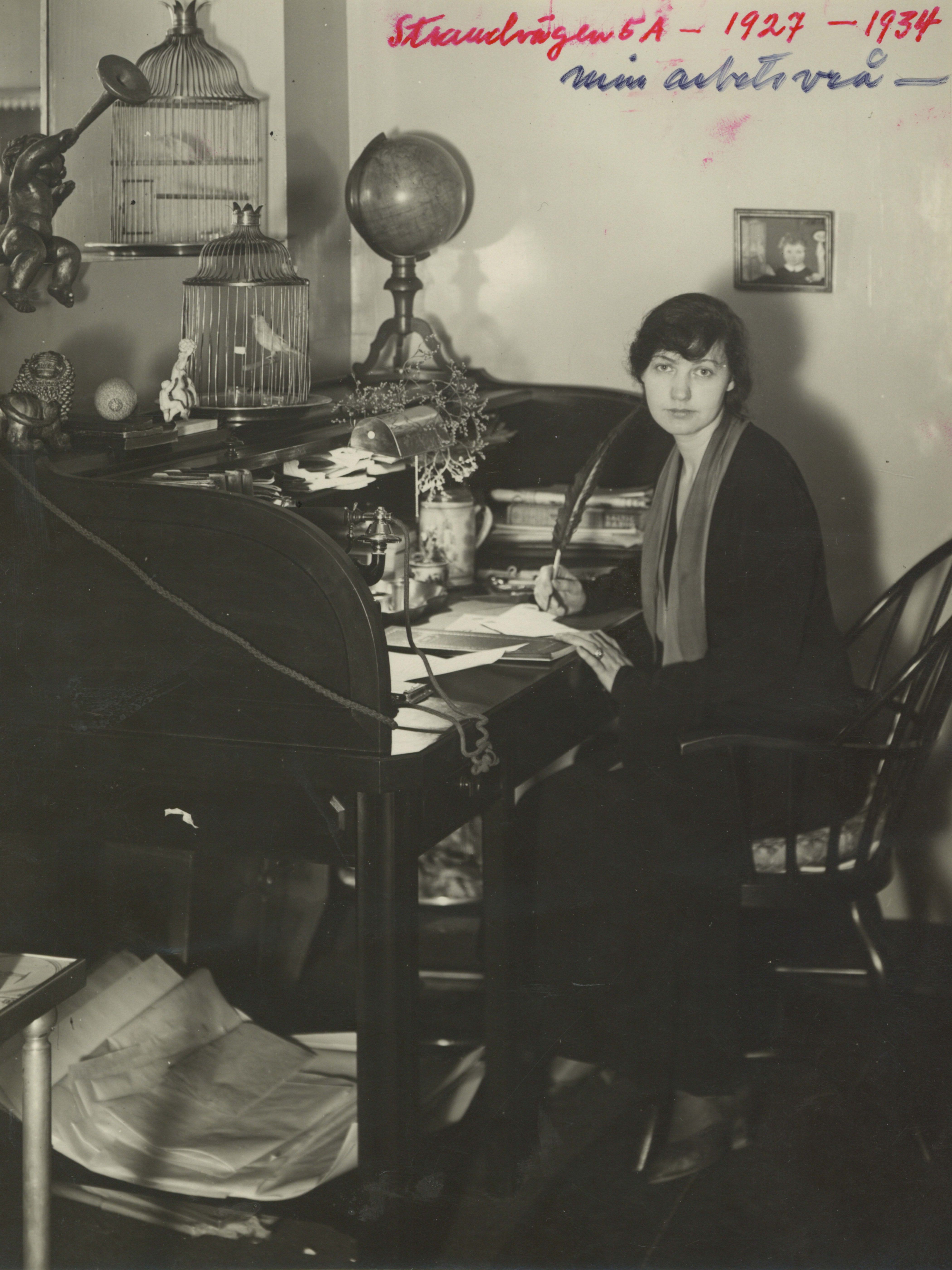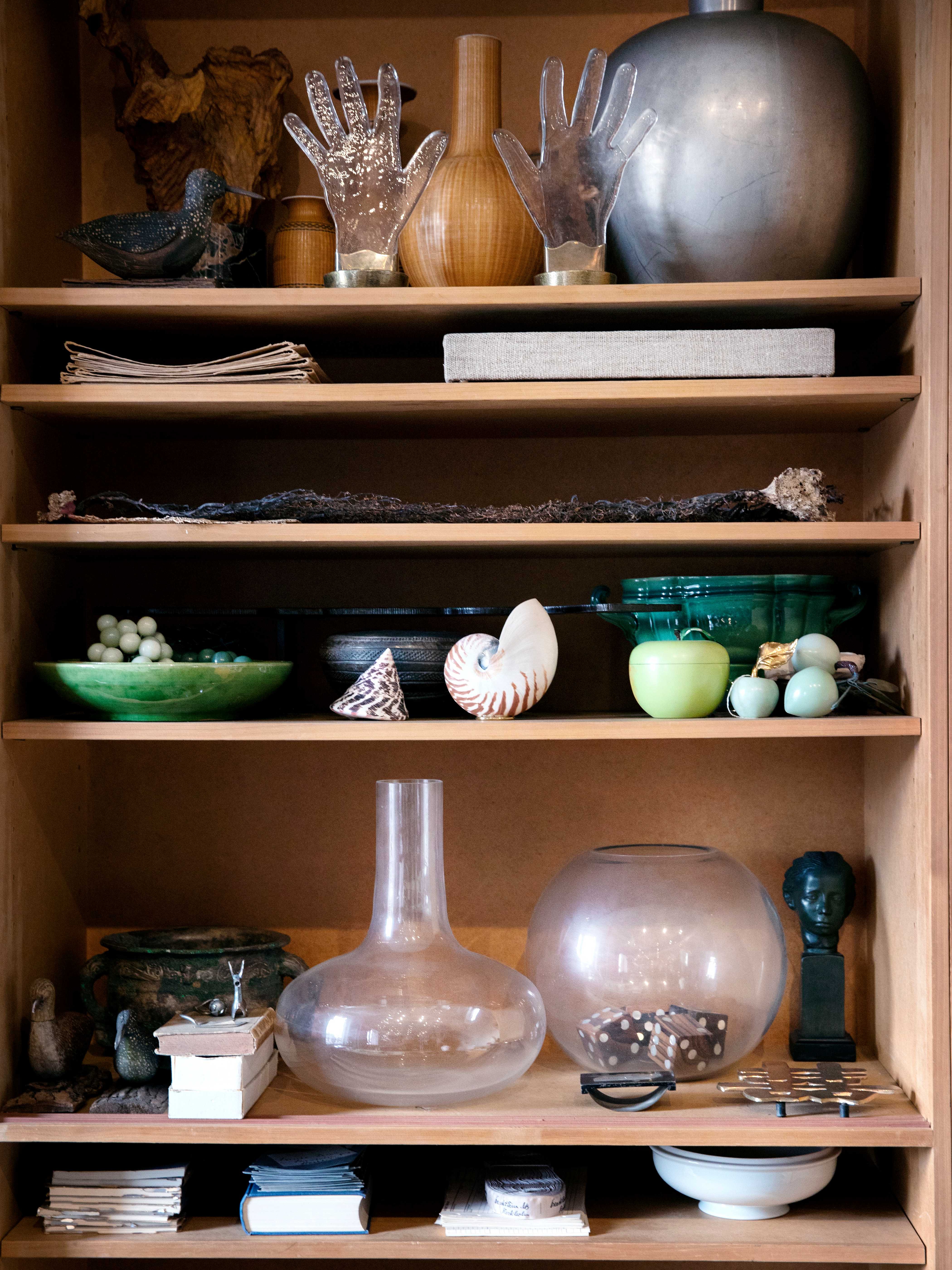
Vase Acorn









Entrepreneur, visionary, artist, designer, producer and scenographer. Many titles could be attributed to Estrid Ericson, for she was an exceptional woman ahead of her time.

Estrid Ericson (1894 – 1981 ) was 30 years old when she founded Firma Svenskt Tenn in 1924. At the time, she was educated as a drawing teacher at Tekniska Skolan (currently Konstfack, University of Arts, Craft and Design) in Stockholm. She also had experience working as a drawing teacher for one semester in her hometown Hjo as well as an employee in the interior design shops Svensk Hemslöjd and Vackrare Vardagsvara.

Estrid Ericson in the pewter workshop.
Estrid Ericson had a vision: to offer contemporary pewter art to a broader public. Using the means inherited from her father she had the opportunity to start her own business. Svenskt Tenn quickly became a creative hub and Estrid Ericson showed a talent for finding promising young designers of the time. During the first years, she collaborated with artists, architects and designers like Nils Fougstedt, Anna Petrus Lyttkens, Uno Åhrén, Björn Trägårdh and Tyra Lundgren.
In 1927, Svenskt Tenn relocated from Smålandsgatan to the current location at Strandvägen in Stockholm. In 1930 she moved into an apartment in the same building. This ignited an interest for interior design, and in conjunction to that, the range of the store would be expanded to include furniture, home decor, and textiles.

The store at Strandvägen 5, 1950s.
Estrid Ericson“I strongly believe in neutral colours when it comes to
interiors. A room should be calm and collected with no excessive use of colour.”
During the first years, her aesthetic was restrained and minimal. In an interview in 1932, Estrid Ericson said: “I strongly believe in neutral colours when it comes to interiors. A room should be calm and collected with no excessive use of colour.”
Svenskt Tenn became known for its exclusive objects, and Estrid Ericsons ability to lead the company was paramount. As a scenographer, creative director, and curator of exhibitions, she was in a league of her own. Her ability to create atmospheric rooms and combine objects in beautiful and unexpected ways was unique.
Estrid Ericsons style of scenography was as simple as it was appealing. Modernist furniture in contrasting colours like black and white were placed in bright interiors. In the store, she set tables and still lifes with decorative boxes, corals and modern pewter art. Estrid Ericson directly embraced the Modernist movement and can was among the first to introduce functionalist furniture to Sweden.

Estrid Ericson at her desk.

Details from Estrid Ericson’s workroom.
Estrid Ericson“Our homes are never completed
during our entire lives, we continue to build upon them.”
With great curiosity and detailed opinions Estrid Ericson put her mark on the furniture Uno Åhrén and Björn Trägårdh designed in the 1930s. Sometimes, she would continue works by others according to her own taste. For example, Anna Petrus Lyttkens famous lions would be used to decorate boxes according to Estrid Ericsons taste.
Meanwhile, Estrid Ericson was a talented designer herself and designed mirrors, boxes, prints, jewellery and interior details. She found inspiration from her many trips, from historical objects and contemporary artists. The combination resulted in a mix of high and low, classic and modern and Estrid Ericson eventually became one of the most renowned figures in the Stockholm design scene of the 20th century.
“We must not forget to cherish freedom within our homes, to not abstain from pieces just because they could jeopardise our aesthetic formalism. It is never a fabricated colour chart that gives a home its personality, but it is all the things one collects through life. All the things we once loved, alongside all the things we love today. — our homes are never completed, during our entire lives, we continue to build upon them.”
— Estrid Ericsons in “The Catechism of Interior design “, 1939.
“Estrid Ericson approved everything that Josef Frank created, and he created what she asked him to”
Eva von Zweighbergk, Tidskriften Form 1967.
Ten years after its founding, Estrid Ericson offered architect and designer Josef Frank; who had left Austria due to antisemitism, a creative sanctuary. From that point, she no longer needed any other artistic collaborators — Josef Frank designed furniture and print designs while she had an unerring eye for how to present them.
Estrid Ericson’s functionalist approach to interiors shifted during her collaboration with Josef Frank. He brought a new perspective with ideas of comfort, prints and colours. Together, they transformed the austere sobriety of the functionalist movement into something softer and more inviting. Their philosophy was about mixing both precious and cheap objects, which necessarily didn’t have to go together. The human experience of interiors was central which meant that comfort was the most important aspect. Memories and objects found from travels and other cultures were placed in a modern interior so to become a reflection of the inhabitants personality.

Estrid Ericson and Josef Frank, Svenskt Tenn, 1941.
Eva von Zweighbergk“Estrid Ericson approved everything that Josef Frank created, and he created what she asked him to.” artistry meets precision in a symphony of design.”

Estrid Ericson with beloved items.

Details from the workroom.
“When I founded Svenskt Tenn I was unrealistic and quite impractical. I only relied on the uncertain future the of good taste.”
Courage would distinguish Estrid Ericson throughout her life. She founded her company out of passion and stayed true to her ideals and values throughout shifts in society and world wars. Estrid Ericson oversaw the daily operations of Svenskt Tenn up until 1975, when she 81 years old sold the company to the Kjell and Märta Beijer Foundation. Even after the sale, she remained at the company as artistic director for several years. Estrid Ericson passed away in 1981, but her life’s work and legacy continue to grow, inspire and amaze.

